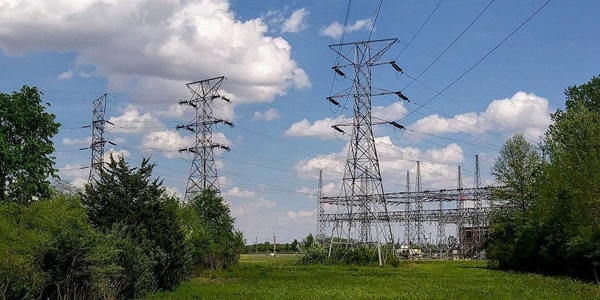By Amanda Durish Cook
MISO will begin using its Transmission Expansion Plan dispatch modeling in interconnection queue studies beginning Aug. 1, when the first cycle of definitive planning phase (DPP) studies is set to begin.
“The decision to move to a new methodology was my decision, so if you want to throw tomatoes, it’s me,” Patrick Brown, executive director of transmission asset management, said at a July 18 Interconnection Process Task Force (IPTF) meeting.
The new method moves MISO from modeling dispatch at a generator’s expected level of output to its maximum requested interconnection service level.
The decision made sense because the models are already “well vetted through the stakeholder process” and used for NERC reliability assessments, according to Brown.
“It’s hard for me to explain why we weren’t already using them in the interconnection process,” Brown said.
Great River Energy’s Mike Steckelberg pointed out that the dispatch question runs into an issue of reliability and therefore should be put before another committee. “You can’t really implement that without putting it to the Planning Subcommittee,” he said.
Planning Advisory Committee Chair Cynthia Crane said the change should be presented to her group. “This is a policy-level change that should be brought forward to the PAC,” she said. Wisconsin Public Service’s Chris Plante agreed.
Brown said the change will be presented to the PAC at the August meeting. “As far as it being a policy change … MISO has the purview to develop the models as we see fit,” he added.
Michigan Public Service Commission staffer Bonnie Janssen said she appreciated MISO’s effort make interconnection and MTEP modeling consistent with each other.
Entergy’s Yarrow Etheredge said the RTO is not allowing enough time for local transmission owners to adjust their planning criteria and suggested a stakeholder workshop on adopting the new methodology.
MISO Director of Resource Utilization Vikram Godbole said local planning criteria would be unchanged.
“We’re only changing the starting point of a study. Nothing else,” he said. “Is it a perfect solution? I don’t know. It’s a step in the right direction to accommodate all new queue generators.”
Interconnection Rights Transfer
MISO is also mulling how it should allow generator owners to retain and transfer interconnection rights when retiring older generation and building new units.
MISO engineer Brett Furuness said the RTO and stakeholders could pursue a “nuclear” option that would entirely prohibit the practice, requiring interconnection rights to be “released back into the wild” to other takers in the interconnection queue.
But MISO is instead proposing to implement rights transfer based on an interconnection request and out-of-cycle study. Any unused rights found after the study will be “permanently relinquished,” and the RTO would initiate a full DPP study cycle if it finds a significant change between the original and replacement generation, which must use the same point of interconnection and commence operation within three years.
The three-year timeline is important because it aligns with the maximum amount of time allowed for a generator suspension, Furuness said.
Some stakeholders questioned the three-year limit, pointing out that it can take longer to build new generation.
Furuness agreed that resource owners actively working through a construction plan would probably be given more time than an owner with a less distinct plan.
“But that’s about step 700, and we’re at step 2 here,” Furuness said.
IPTF Future
During its July 26 meeting, MISO’s Steering Committee will decide whether to extend the life of the nearly four-year-old IPTF until December or convert it into a working group. The IPTF was supposed to sunset this month, but PAC members voted in June for an extension. As part of the RTO’s stakeholder redesign, all task force sunsets or extensions are put before the Steering Committee for final approval.





